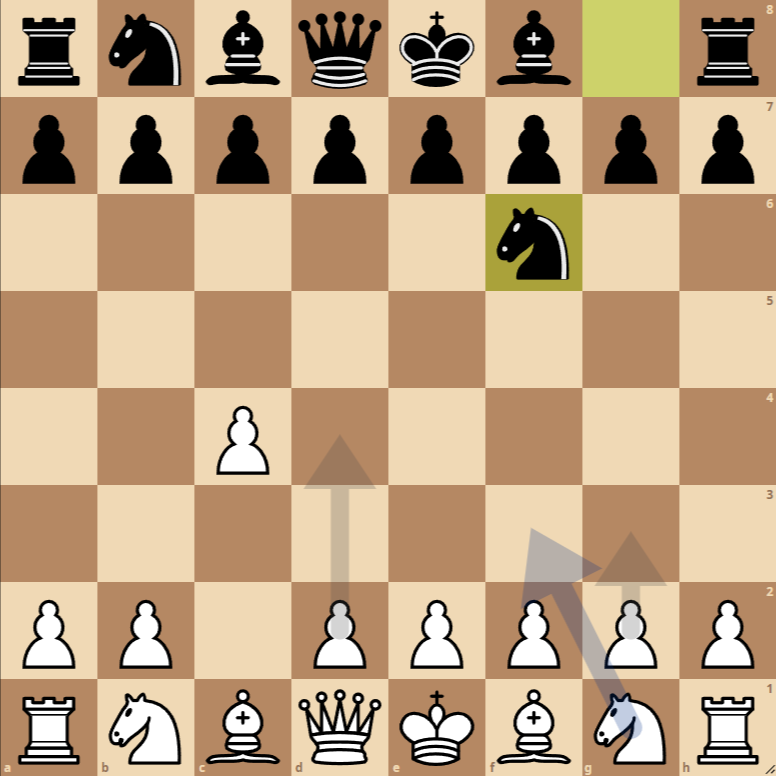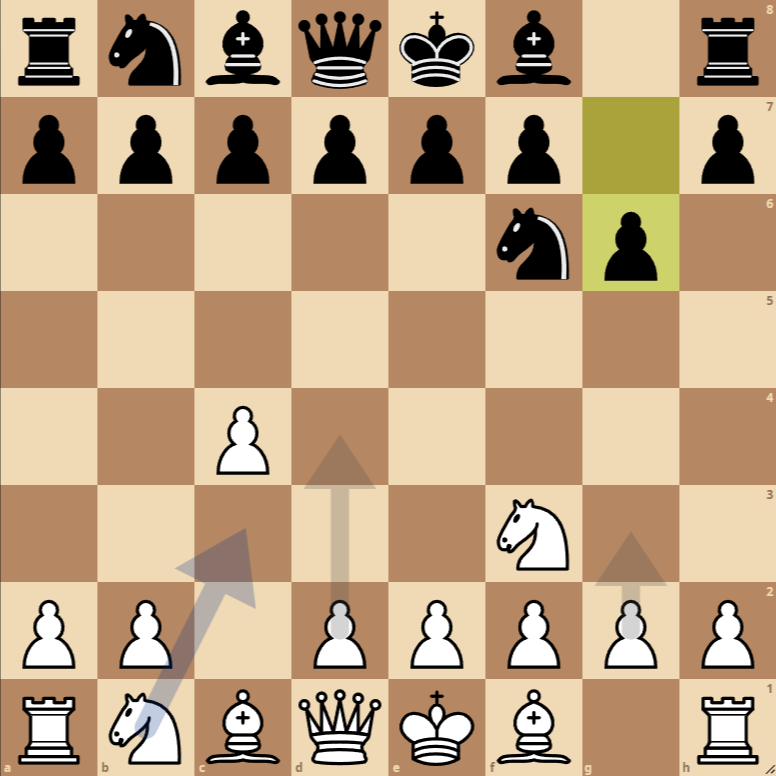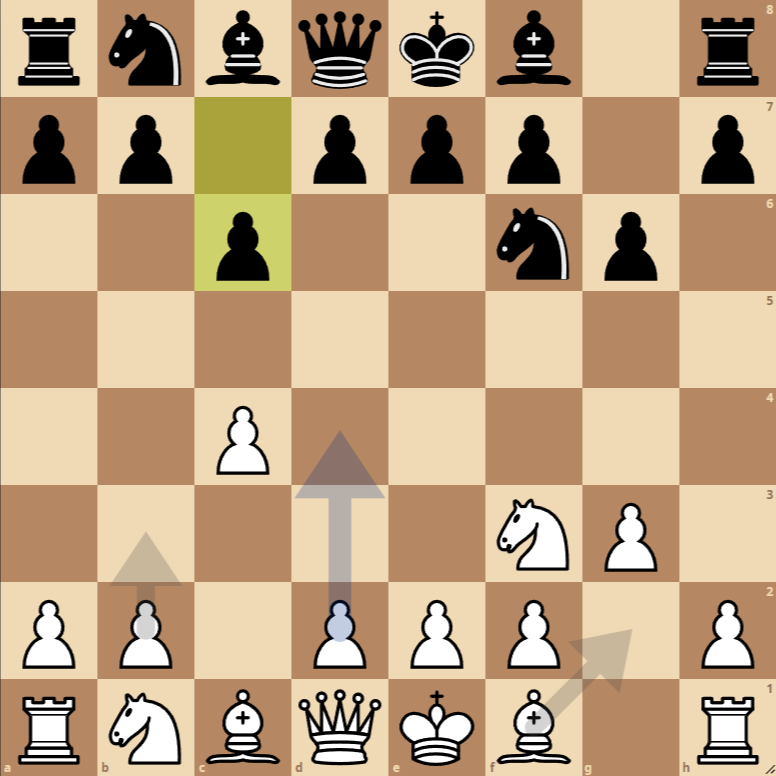How to Play the English Opening: Anglo-Indian Defense, Slav Formation



- 1. c4 Nf6: White begins with asymmetrical control of the center by moving the queen’s pawn to c4. Black responds by developing the knight to f6, targeting the center and preparing for a possible king’s bishop fianchetto.
- 2. Nf3 g6: White continues their development by placing the knight on f3, controlling the center, and preparing for castling kingside. Black chooses to fianchetto their king’s bishop, a typical setup in the Indian Defense, by playing g6.
- 3. g3 c6: White also prepares for fianchetto by playing g3, indicating a positional game and readiness for the long-range bishop on g2. Black responds with c6, solidifying their central structure and preparing for the d5 advance, typical of the Slav Formation.
Variations of the English Opening: Anglo-Indian Defense, Slav Formation
Variation 1: 4. g2
Continuing with the fianchetto plan, White develops their bishop to g2, targeting the center and preparing to castle kingside.
Variation 2: 4. d4
White can opt for a more centralized approach by advancing the queen’s pawn to d4, challenging Black’s control of the center.
Variation 3: 4. b3
With b3, White prepares another fianchetto, this time for the queen’s bishop, aiming for long-range control of diagonals.

